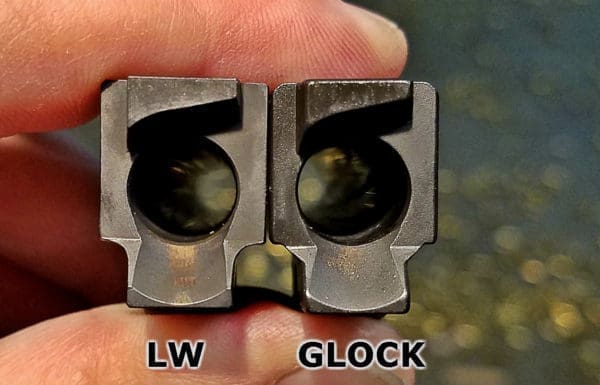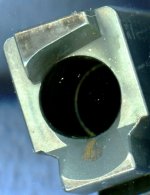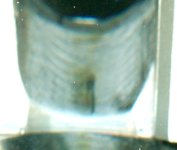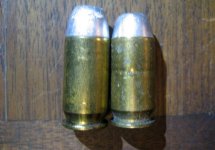This discussion has raised a few more questions in my mind, so I'll ask them and see what you think.
First, does anyone have any examples of bullet setback NOT from a Browning type tilt barrel gun??
For example from either a fixed barrel semi or one where the barrel just reciprocates in the same plane and does not tilt?
Anyone have any examples of setback happening in a Luger?? or a P.38? Beretta?? or are they all coming from tilt barrel guns?
IF bullets are being pushed back into the case, then they must be hitting something, if its not the feed ramp, what is it??
If bullets are not being pushed back into the case from hitting something and its the slide hitting the back of the case and shoving it up over the bullet (which personally I doubt) then wouldn't the heaviest slides with the strongest springs be the most likely to do that?
So where's the tales of setbacks from Desert Eagle shooters?? Fixed barrel and the heaviest slide and strongest springs you will commonly find. Is it the solid roll crimp of the revolver cartridges that prevents setback there?? What about the .50 AE, its taper crimped. Any reports of setback there? I've not heard of any...
And then there's the "if its set back, its too short to feed" thing. POSSIBLY, IF its enough too short. However some guns will actually feed empty cases, and about all of them will feed rounds shorter than others. The gun can't tell if your round is setback .2" from its spec length or if you're feeding a round with a shorter bullet that is that same .2" shorter when at it's spec length. (and .2" is just a number for illustration)
Seems to be its happening, rarely, but happening only in some duty class semi autos, in certain calibers. We have some proof that the method of chambering and rechambering can affect how often it seems to happen.
My theory is that the ammo is being made just borderline durable enough (and no more) and that sometimes, a round here and there slips over that border and sets back.
Thoughts??
First, does anyone have any examples of bullet setback NOT from a Browning type tilt barrel gun??
For example from either a fixed barrel semi or one where the barrel just reciprocates in the same plane and does not tilt?
Anyone have any examples of setback happening in a Luger?? or a P.38? Beretta?? or are they all coming from tilt barrel guns?
IF bullets are being pushed back into the case, then they must be hitting something, if its not the feed ramp, what is it??
If bullets are not being pushed back into the case from hitting something and its the slide hitting the back of the case and shoving it up over the bullet (which personally I doubt) then wouldn't the heaviest slides with the strongest springs be the most likely to do that?
So where's the tales of setbacks from Desert Eagle shooters?? Fixed barrel and the heaviest slide and strongest springs you will commonly find. Is it the solid roll crimp of the revolver cartridges that prevents setback there?? What about the .50 AE, its taper crimped. Any reports of setback there? I've not heard of any...
And then there's the "if its set back, its too short to feed" thing. POSSIBLY, IF its enough too short. However some guns will actually feed empty cases, and about all of them will feed rounds shorter than others. The gun can't tell if your round is setback .2" from its spec length or if you're feeding a round with a shorter bullet that is that same .2" shorter when at it's spec length. (and .2" is just a number for illustration)
Seems to be its happening, rarely, but happening only in some duty class semi autos, in certain calibers. We have some proof that the method of chambering and rechambering can affect how often it seems to happen.
My theory is that the ammo is being made just borderline durable enough (and no more) and that sometimes, a round here and there slips over that border and sets back.
Thoughts??






